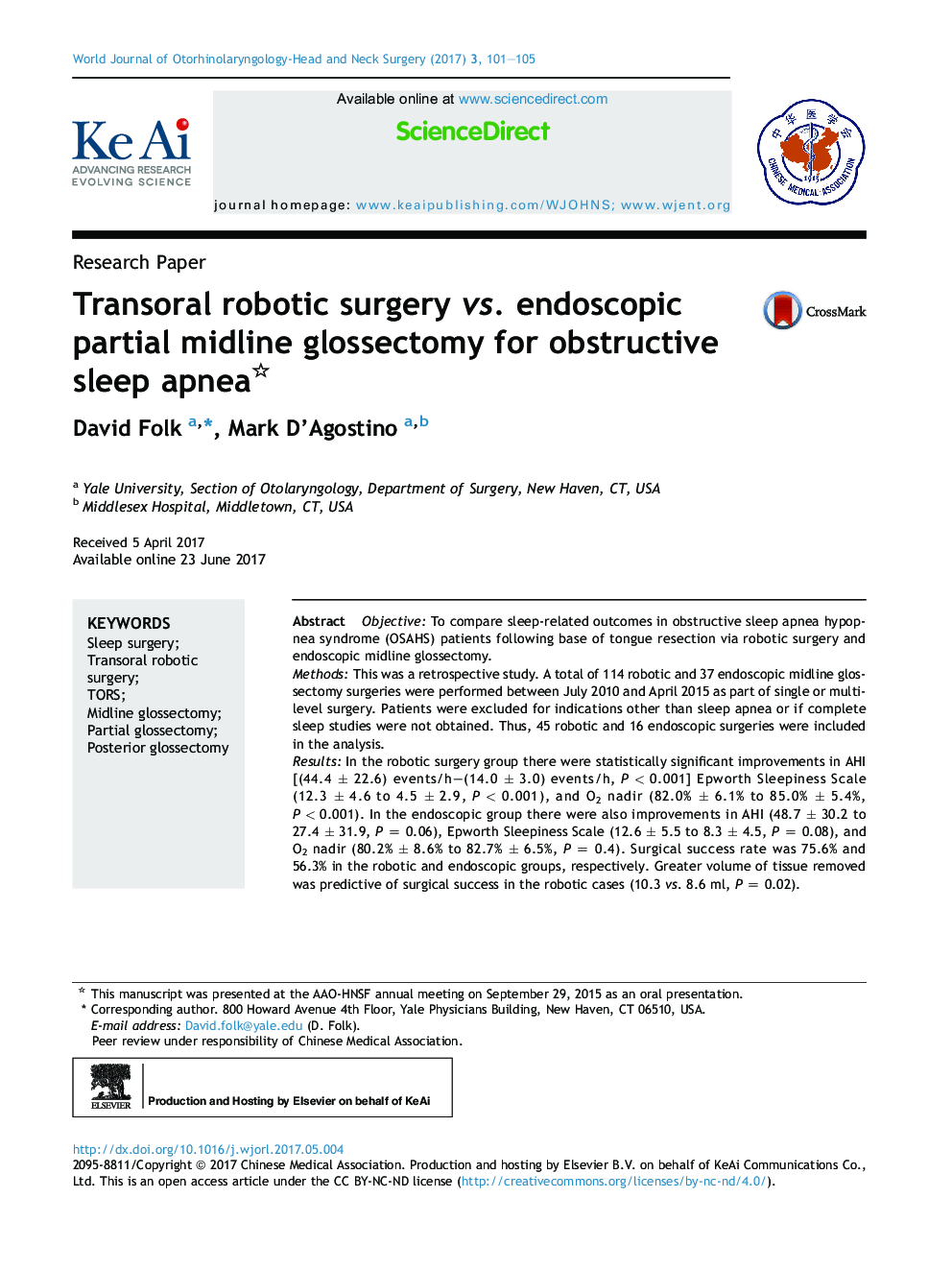| Article ID | Journal | Published Year | Pages | File Type |
|---|---|---|---|---|
| 5670679 | World Journal of Otorhinolaryngology - Head and Neck Surgery | 2017 | 5 Pages |
ObjectiveTo compare sleep-related outcomes in obstructive sleep apnea hypopnea syndrome (OSAHS) patients following base of tongue resection via robotic surgery and endoscopic midline glossectomy.MethodsThis was a retrospective study. A total of 114 robotic and 37 endoscopic midline glossectomy surgeries were performed between July 2010 and April 2015 as part of single or multilevel surgery. Patients were excluded for indications other than sleep apnea or if complete sleep studies were not obtained. Thus, 45 robotic and 16 endoscopic surgeries were included in the analysis.ResultsIn the robotic surgery group there were statistically significant improvements in AHI [(44.4 ± 22.6) events/h-(14.0 ± 3.0) events/h, P < 0.001] Epworth Sleepiness Scale (12.3 ± 4.6 to 4.5 ± 2.9, P < 0.001), and O2 nadir (82.0% ± 6.1% to 85.0% ± 5.4%, P < 0.001). In the endoscopic group there were also improvements in AHI (48.7 ± 30.2 to 27.4 ± 31.9, P = 0.06), Epworth Sleepiness Scale (12.6 ± 5.5 to 8.3 ± 4.5, P = 0.08), and O2 nadir (80.2% ± 8.6% to 82.7% ± 6.5%, P = 0.4). Surgical success rate was 75.6% and 56.3% in the robotic and endoscopic groups, respectively. Greater volume of tissue removed was predictive of surgical success in the robotic cases (10.3 vs. 8.6 ml, P = 0.02).ConclusionsBoth robotic surgery and endoscopic techniques for tongue base reduction improve objective measures of sleep apnea. Greater success rates may be achieved with robotic surgery compared to traditional methods.
